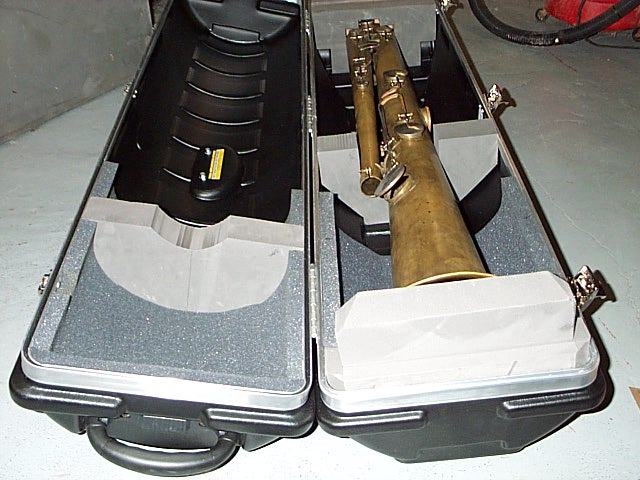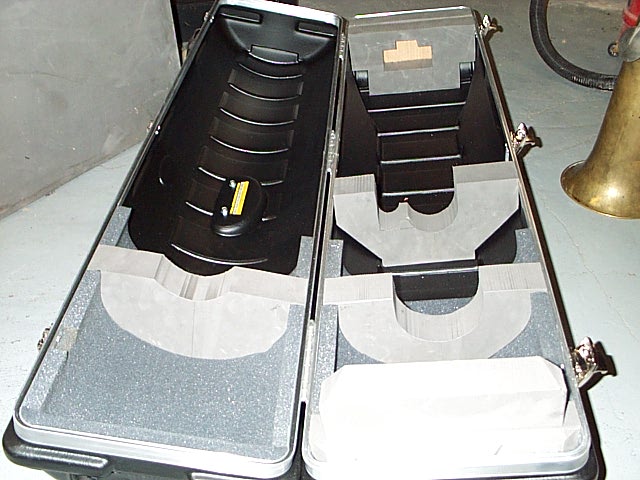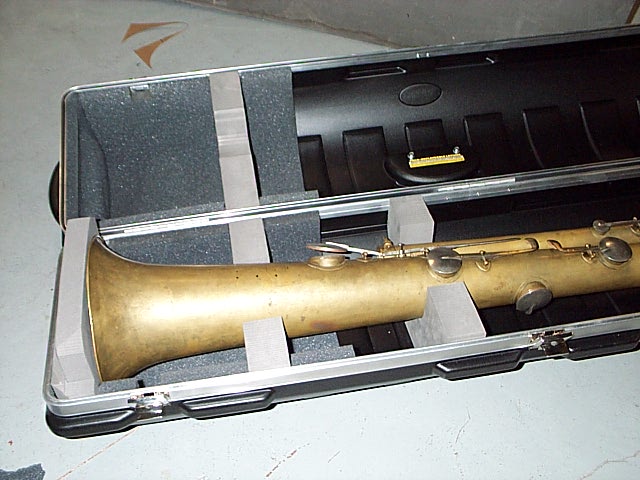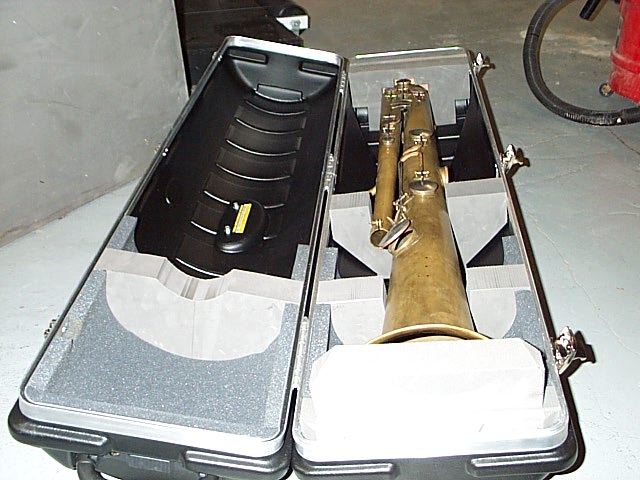In order to allow the ophicleide to be lifted up at the bell end and then 'unplugged' from the bow pad assembly when removing it from the case, the bell must be free to move upwards. However, when the case is closed, it is necessary to prevent this same motion. |
 |
If life were simple, there would be no more pads required. |
 |
This photo shows how the ophicleide fits into the pads when the case is open. Note how they allow the bell end to be lifted easily for removal; once the bell is clear of the bell pad, the instrument can be moved to the left, 'unplugging' it from the bow pad assembly. |
 |
This photo shows another view of the pads with the ophicleide installed. |
 |